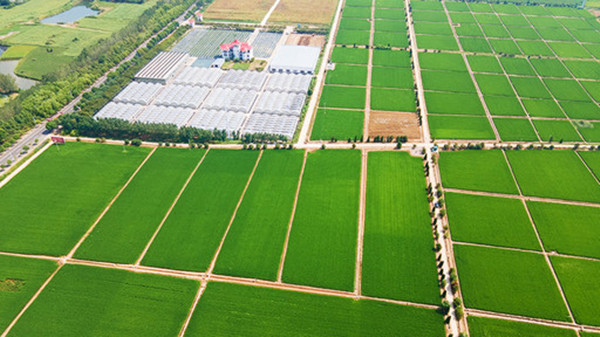


CPC plenum charts clearer reform path

A modern agricultural cultivation demonstration zone in Xiaogang Village, Fengyang County, Chuzhou, Anhui Province Photo: XINHUA
Over the past decades, the spring breeze of reform and opening up has spread to every corner of China. The Third Plenary Session of the 11th CPC Central Committee in 1978 and the Third Plenary Session of the 18th CPC Central Committee in 2013 marked the beginnings of epoch-making reforms. With the successful conclusion of the Third Plenary Session of the 20th CPC Central Committee in mid-July, China is continuing its reforms with a sober and determined approach. To interpret the arrangements and measures unveiled at the plenum, CSST recently interviewed Hemant Adlakha, a professor at Jawaharlal Nehru University in India.
A set of reform plans
In Adlakha’s view, the convening of the third plenum of the 20th CPC Central Committee is great news for both China and the world. The Resolution of the CPC Central Committee on Further Deepening Reform Comprehensively to Advance Chinese Modernization (hereafter simplified as the Resolution), signals several positive developments. Among them, the most notable is the slogan “further deepening reform comprehensively to advance Chinese modernization.”
At the plenary session, China announced a comprehensive set of reform plans, detailing over 300 specific measures, further clarifying the country’s future reform trajectory.
“What impressed me the most as regards the Resolution, is that the Party pledges to accomplish building a ‘high-standard socialist market economy’ by 2035,” Adlakha said, adding that China’s transition from socialist market economy to high-standard socialist market economy has been a hot topic among economists and experts globally.
Economic structural reform
Regarding economic structural reform as the spearhead, Adlakha commented that persistently low global economic growth in recent years, particularly during and after the COVID-19 pandemic, has heightened social and political tensions. Given the present state of global affairs, it is of special significance that the Third Plenary Session of the CPC Central Committee was convened to chart a course for the future of China’s economic reform.
China set the official GDP growth target at around 5% this year. “Compared with the GDP growth in the last three decades, 5% is not high. This figure highlights that China is shifting its focus from rapid economic growth to more sustainable and stable growth. The tasks of economic system reform made in this plenary session have conveyed China’s such will to the world,” Adlakha said.
“As I noticed, it is emphasized in the Resolution that ‘we will work to facilitate revolutionary breakthroughs in technology.’ This means the reallocation and optimization of factors of innovation. To reinvigorate the economy, the Chinese government has shifted its eye to the manufacture of high-tech products and green technology goods production, such as electric vehicles, solar panels, and batteries as well as medical equipment,” Adlakha continued.
Adlakha observed that China is already a world leader in many of these sectors, not only in terms of technical efficiency—thanks to its large pool of graduates from scientific institutions—but also in terms of cost, due to innovation in production methods. The development of new quality productive forces, representing advanced forms of productive forces distinct from traditional economic growth models, is expected to bring new opportunities for the Chinese economy.
Another standout aspect of the Resolution is its focus on land system reform, Adlakha said. Over four decades ago, reforming rural land ownership, which essentially allowed collectively owned land to be contracted by individual households, was a transformative move that cracked open a once rigidly planned system. Today, the new roadmap for rural land reforms and new urbanization represents another landmark effort, poised to become a fresh source of growth for the Chinese economy, he predicted.
Great determination
Adlakha asserted that transitioning to a new economic model often disrupts older industries, but such impacts appear minimal in China. The government has laid out a clear set of economic objectives, including rebalancing the economy towards services, boosting household consumption, and turning to higher-productivity green manufacturing, shifting away from real estate and infrastructure as key growth drivers.
Adlakha pointed out that certain Western media reports and analyses suggest “China’s reform is losing steam,” or criticize this year’s plenary session for not delivering any “big bang reforms” akin to those announced at the third plenum in December 1978. He noted that starting under the Trump Administration and continuing under Biden, the capitalism-dominated US hegemony has launched an economic and trade war against China aimed at crushing its economic development through ever-expanding sanctions and export bans on vital high-tech components.
“However, I am convinced that no matter when, China’s pursuit of independent path will not waver or change. On this path, China will continue its reform with great determination,” Adlakha concluded.
Editor:Yu Hui
Copyright©2023 CSSN All Rights Reserved